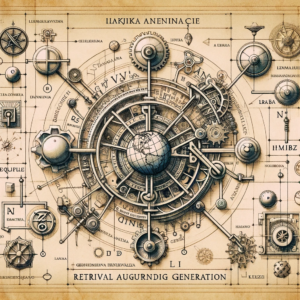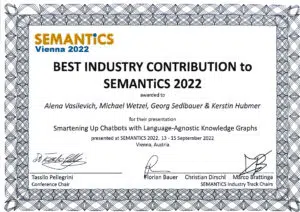Many data problems can be reduced to classification, a principle that holds also true in the era of Generative AI. The key to obtaining up-to-date, accurate, relevant, and company-specific AI output lies in prompting with good context (Retrieval Augmented Generation, RAG) or fine-tuning models (Retrieval Augmented Fine Tuning, RAFT). The Retrieval aspect essentially involves a classification challenge: determining which text in a vast library is truly relevant. This task becomes particularly complex as most companies require Multilingual-RAG (M-RAG) to deploy AI for their global customers across multiple languages
Managing and classifying multilingual documents presents a unique set of challenges since today data is as diverse as it is voluminous. Traditional techniques, while pioneering in their time, now grapple with the complexities of modern, data-driven environments. In this post, we delve into the limitations of these conventional approaches, before introducing a more sophisticated solution: Multilingual Knowledge Systems.

Shortcomings of Traditional Classification Techniques
1. Keywords in Context:
Keyword-based approaches, the most traditional form, are straightforward but significantly limited in scope. They fail to capture the richness of language and are particularly ineffective in handling synonyms, polysemy, and cultural context variations. In multilingual environments, these limitations are magnified, leading to poor recall and precision.
2. Trained Classifiers:
While machine learning classifiers have been the backbone of document classification, their efficacy diminishes in multilingual contexts. The primary drawback? The need for extensive, annotated datasets in each language, which is both resource-intensive and impractical for less common languages. Moreover, subtle linguistic nuances and cultural contexts often elude these models, leading to suboptimal accuracy.
3. K-Nearest Neighbors (KNN):
KNN, a simple yet effective algorithm, suffers when faced with the vast and sparse feature spaces typical of textual data. In multilingual scenarios, its reliance on distance metrics becomes a hindrance; direct translation or transliteration isn’t always meaningful, making it difficult to accurately gauge similarity across languages.
4. Word Embeddings:
Word embeddings offer a more nuanced understanding of semantic relationships by representing words in high-dimensional space. However, their performance is inherently tied to the corpus they’re trained on. For multilingual applications, this necessitates either a singular, large, multilingual corpus (which may not exist for all language pairs) or separate embeddings for each language, complicating the integration of semantic knowledge across linguistic boundaries.
Enter Multilingual Knowledge Systems
Against the backdrop of these limitations emerges a promising solution: Multilingual Knowledge Systems (MKS). MKS, like Coreon, represent a paradigm shift in handling multilingual data. They merge knowledge graphs with terminology databases. These systems leverage comprehensive semantic networks, integrating linguistic and domain knowledge to provide a unified framework for document classification across multiple languages. The advantages are:
A Multilingual Knowledge Systems offers an integrated platform that combines the robustness of semantic networks with the flexibility required for multilingual document classification.
Semantic Understanding: MKS go beyond mere word-level analysis, capturing the essence of text through concepts and their interrelations. This enables them to grasp contextual nuances lost on traditional methods.
Language Agnostic: By operating at the conceptual level, MKS inherently support multiple languages without the need for separate models or extensive retraining. This opens up possibilities for truly global document classification systems.
Efficiency and Scalability: Unlike methods that require large annotated datasets for each language, MKS can leverage existing knowledge bases, significantly reducing the time and resources needed for system development and deployment.
Enhanced Accuracy: By understanding the semantic relationships between concepts, MKS can achieve higher precision and recall in document classification tasks, even in complex, multilingual contexts.
Leading the Charge
Coreon stands out as a leading example of Multilingual Knowledge Systems. It offers an integrated platform that combines the robustness of semantic networks with the flexibility required for multilingual document classification. Coreon’s approach addresses the challenges of multilingual AI, ensuring that knowledge is made accessible and actionable across linguistic divides. For organizations looking to use RAG or RAFT and therefore need to classify multilingual documents against a given information structure, adopting a Multilingual Knowledge System is not just an option—it’s a necessity in today’s interconnected world.


